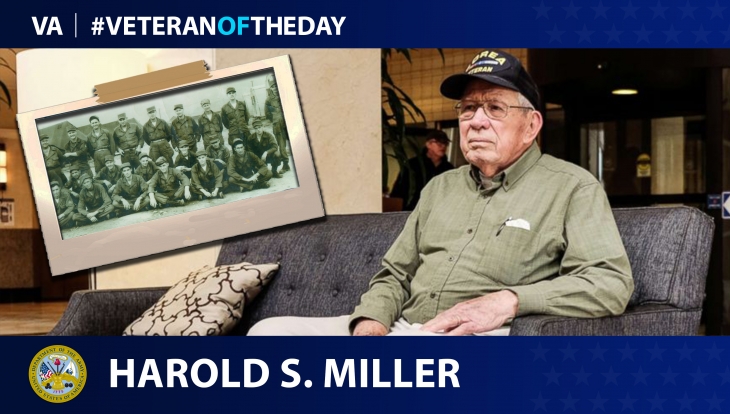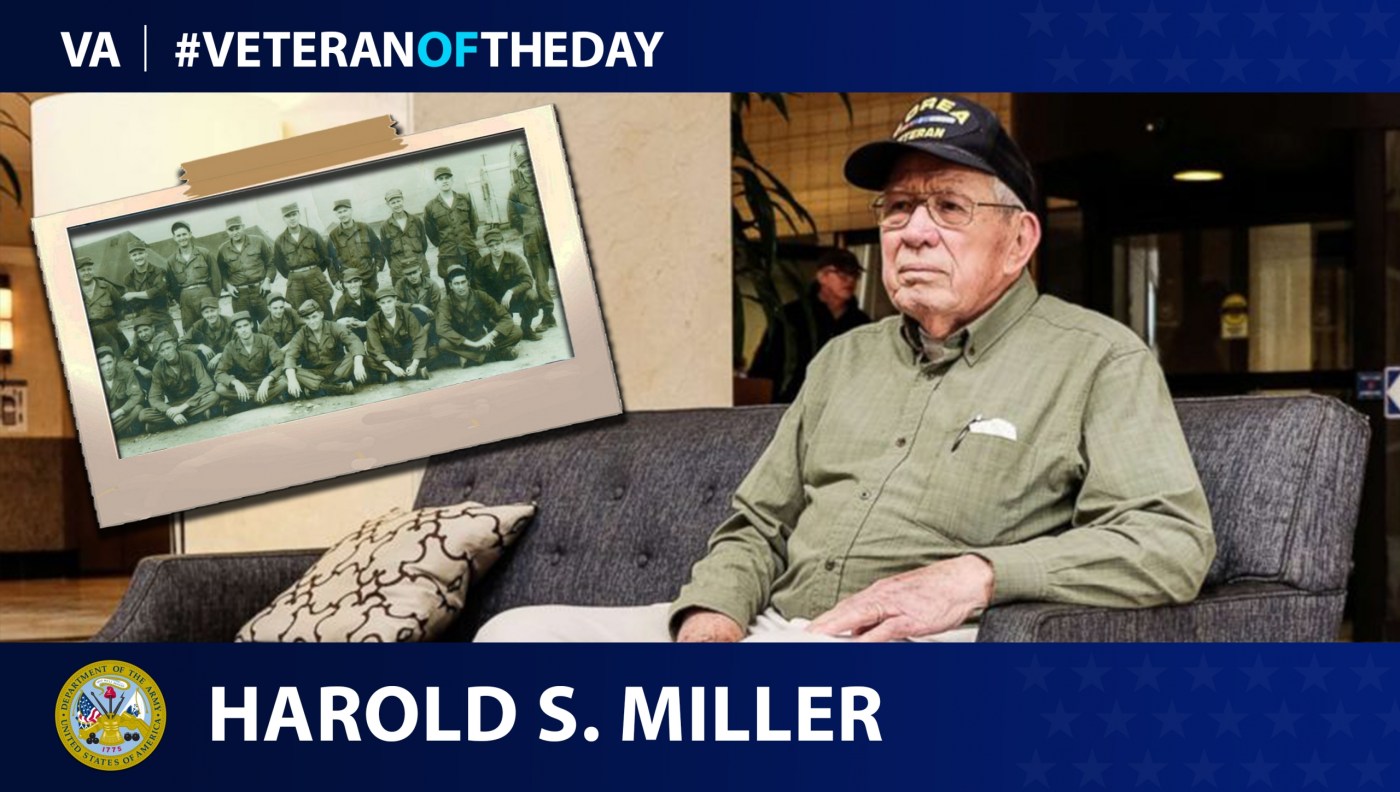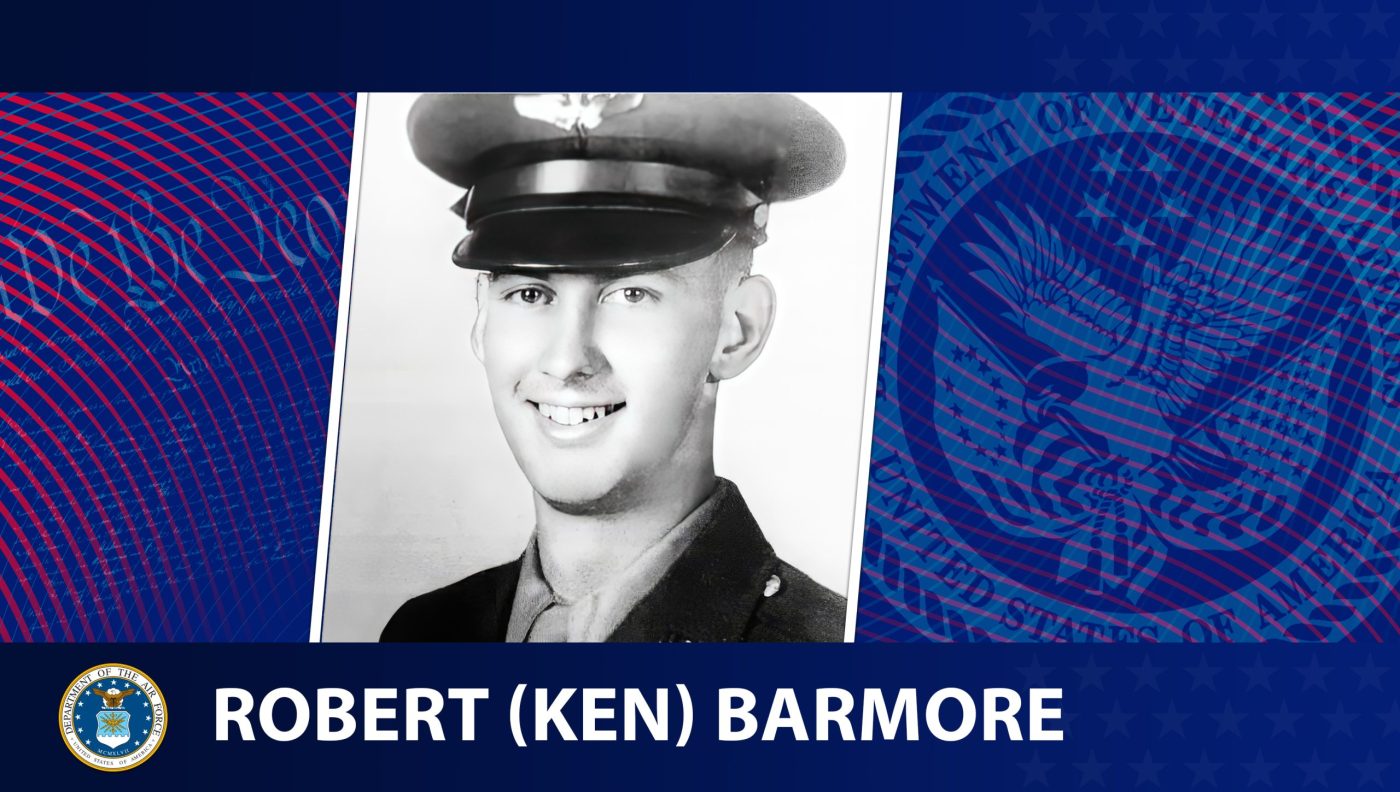
Today’s #VeteranOfTheDay is Army Veteran Harold S. Miller, who served as a merchant mariner during World War II and as a communications specialist in Korea.
Harold Miller was born in November 1926 in Landsdale, Pennsylvania. While attending high school, Miller tried to join the military early multiple times in order to fight in World War II but could not due to his color blindness.
After he graduated in 1944, Miller enlisted in the U.S. Merchant Marines, an auxiliary naval force. He completed training at Sheepshead Bay in New York and served aboard USS Al Hunt, a coal hauling vessel. It was a tough first posting – in a Library of Congress interview, Miller recalled that he could never get the coal dust completely off of him. Miller subsequently served aboard USS Walker, a cargo ship that ran supplies from the U.S. to Europe. Upon arriving at the Walker’s berthing, Miller recalled, “Compared to the coal collier, it looked like a battleship!”
During the last year of World War II, Miller ran supplies across the North Atlantic and transported American soldiers back home from Europe. He left the Merchant Marines in 1946.
After he briefly pursued a career in accounting, the Army drafted Miller in 1950 for the Korean War. He began Army training at Fort Dix, New Jersey, and completed it at Fort Benning, Fort Gordon and Fort Stewart, all located in Georgia. Miller initially trained as a communications specialist on a variety of equipment.
While in Georgia, Miller joined an experimental unit that used sensitive microphones to locate enemy positions. Miller then transferred to Camp Stoneman, California, where he conducted drills in preparation for deployment to Korea. His platoon was the “Unknown Unit” due to its top secret mission. Miller recalled that he and his compatriots could not interact with the general population of soldiers. Miller briefly stayed in Japan before he went to Busan, South Korea, where he attached to the 5th Regimental Combat Team. His unit remained slightly behind the lines and located enemy positions while dodging counter fire. On his second day in combat, Miller’s unit located and organized the destruction of a major enemy ammunition stockpile.
Miller spent 11 months overseas before he returned home to Pennsylvania. In addition to his communications work, Miller ran logistical missions and served as a guard at a prisoner of war camp. After he returned from Korea, Miller honorably discharged from the Army as a corporal in 1952.
We honor his service.
Nominate a Veteran for #VeteranOfTheDay
Do you want to light up the face of a special Veteran? Have you been wondering how to tell your Veteran they are special to you? VA’s #VeteranOfTheDay social media feature is an opportunity to highlight your Veteran and his/her service.
It’s easy to nominate a Veteran. Visit our blog post about nominating to learn how to create the best submission.
Veterans History Project
This #VeteranOfTheDay profile was created with interviews submitted to the Veterans History Project. The project collects, preserves, and makes accessible the personal accounts of American war Veterans so that future generations may hear directly from Veterans and better understand the realities of war. Find out more at http://www.loc.gov/vets/.
Contributors
Writer: Michael Rattner
Editor:
Fact checker: Hannah Bundschuh
Graphic artist:
Topics in this story
More Stories
This week’s Honoring Veterans Spotlight honors the service of Army Veteran Scotty Hasting, who served in Afghanistan.
This week’s Honoring Veterans Spotlight honors the service of Army Veteran Roy Sheldon, who served in 97th General Hospital in Frankfurt, Germany.
This week’s Honoring Veterans Spotlight honors the service of Air Force Veteran Robert (Ken) Barmore, who served in Bennettsville Primary Flight School, Italy and Romania.







We honor the service of Harold Miller.